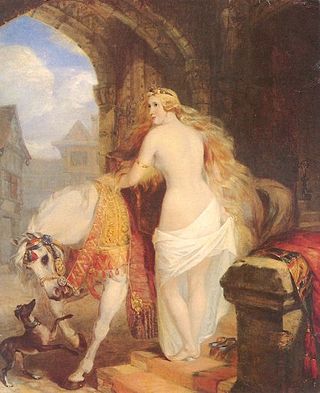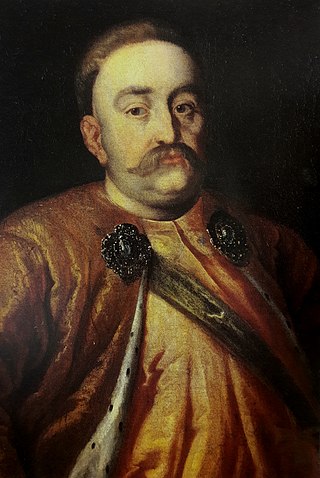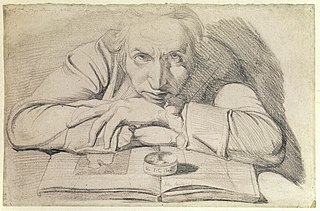William Denholm Kennedy | |
|---|---|
| Born | 16 June 1813 |
| Died | 2 June 1865 (aged 51) |
| Nationality | Scottish |

William Denholm Kennedy (16 June 1813- 2 June 1865) was a Scottish historical, genre and landscape painter.
William Denholm Kennedy | |
|---|---|
| Born | 16 June 1813 |
| Died | 2 June 1865 (aged 51) |
| Nationality | Scottish |

William Denholm Kennedy (16 June 1813- 2 June 1865) was a Scottish historical, genre and landscape painter.

William Denholm Kennedy, born at Dumfries on 16 June 1813, was educated in early life at Edinburgh. When seventeen years of age he came to London, and in 1833 entered the school of the Royal Academy. Here he began a lifelong friendship with William Etty, RA , who sensibly influenced his style as an artist. In 1833 he sent his first pictures to the Royal Academy, A Musical Party and The Toilet, and continued to exhibit there almost every year until his death. In 1835 he won the Academy gold medal for an historical painting, Apollo and Idas , and in 1840, being awarded the travelling allowance, went to Italy, where he spent two years in study at Rome. He returned with many sketches and studies of Italian scenery, and an Italian influence was subsequently visible in his work, especially in such pictures as The Bandit Mother, The Italian Goatherd, The Land of Poetry and Song, and others. Kennedy, however, failed to fulfil his early promise, and his work deteriorated. He died suddenly at his house in Soho Square on 2 June 1865. [1]
Kennedy was a cultivated man, fond of music, and a good judge of etchings and engravings. His subjects for painting embraced almost everything except portraiture. He occasionally exhibited at the other leading exhibitions besides the Academy. He frequently assisted Thomas Willement with designs for stained glass, among others those for the windows in St. Stephen's, Walbrook, London. [1]

James Stark was an English landscape painter. A leading member of the Norwich School of painters, he was elected vice-president of the Norwich Society of Artists in 1828 and became their president in 1829. He had wealthy patrons and was consistently praised by the Norfolk press for his successful London career.

Joseph Barney, was a British painter and engraver. He is usually described as a pupil of Antonio Zucchi and Angelica Kauffman and as a fruit and flower painter to the Prince Regent.

Marshall Claxton was an English subject, genre, landscape and portrait painter.

John Partridge was a British artist and portrait painter. Named 'portrait painter-extraordinary' to Queen Victoria, his pictures depict many of the notable figures of his time.

William Ashford was an English painter who worked exclusively in Ireland, where he lived from the age of 18, having initially gone there to take up a post with the Ordnance Office. His earliest paintings were flower pieces and still lifes, but from 1772 he exhibited landscapes. He became president of the Irish Society of Artists in 1813, and was first elected President of the Royal Hibernian Academy. His works include a set of views in and around Mount Merrion, painted for the 4th Earl FitzWilliam.

Richard Rothwell was a nineteenth-century Irish portrait and genre painter.

Adam Buck (1759–1833) was an Irish neo-classical portraitist and miniature painter and engraver principally active in London.

Prosper Henricus Lankrink (1628–1692) was a Flemish painter.

Alexander George Fraser (1786–1865) was a Scottish genre and domestic painter who exhibited his paintings at the Royal Academy in London for many years. His son, Alexander Fraser (1827-1899), was also a prominent artist with whom he is sometimes confused.
George Patten was a British portraitist.

Scottish art in the nineteenth century is the body of visual art made in Scotland, by Scots, or about Scottish subjects. This period saw the increasing professionalisation and organisation of art in Scotland. Major institutions founded in this period included the Institution for the Encouragement of the Fine Arts in Scotland, the Royal Scottish Academy of Art, the National Gallery of Scotland, the Scottish National Portrait Gallery and the Glasgow Institute. Art education in Edinburgh focused on the Trustees Drawing Academy of Edinburgh. Glasgow School of Art was founded in 1845 and Grays School of Art in Aberdeen in 1885.
Henry James Richter (1772–1857), artist and philosopher, was born in Middlesex, possibly at 40 Great Newport Street, Soho, on 8 March 1772 and baptised at St Anne's Church, Soho, on 5 April at that same year.

Scottish genre art is the depiction of everyday life in Scotland, or by Scottish artists, emulating the genre art of Netherlands painters of the sixteenth and seventeenth centuries. Common themes included markets, domestic settings, interiors, parties, inn scenes, and street scenes.
John Evan Hodgson was a British painter. He painted domestic genres scenes, historical subjects, and in an orientalist fashion inspired by North Africa.
Charles James Lewis was an English painter in oils and watercolours.
Captain John Duncan King was an Irish army officer and landscape-painter.
Willis or Willes Maddox was an English painter.

William Henry Kearney, was an English water-colour painter of landscapes and figure subjects.
Joseph Bartholomew Kidd, (1808–1889) was a Scottish painter.

John Cartwright was an English painter.